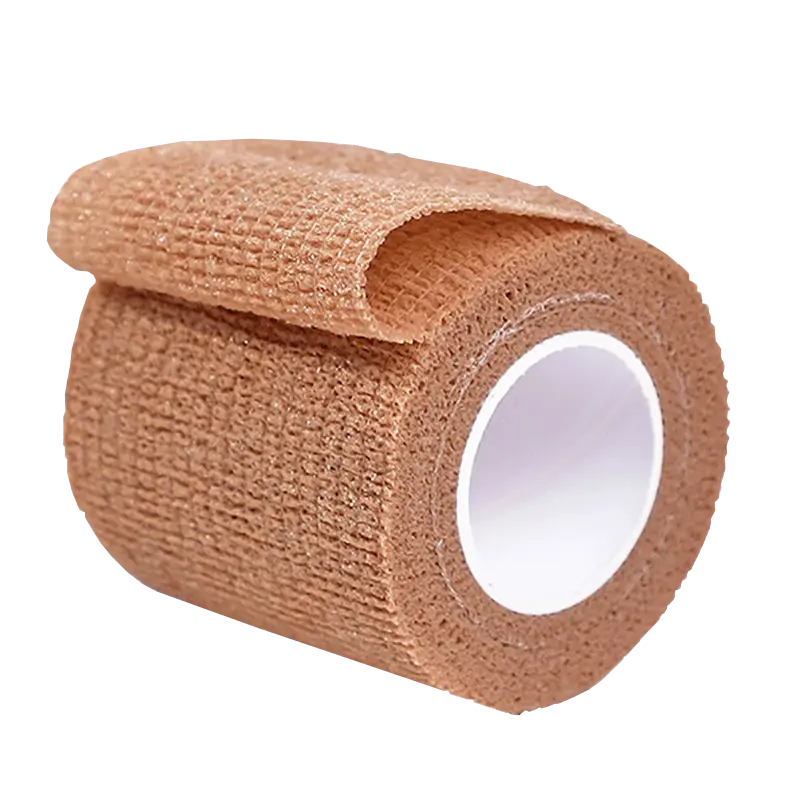Understanding Elastic Bandages
Elastic bandages are an essential tool in medical, athletic, and first-aid settings. Designed to provide support, compression, and stability, these bandages help manage injuries, reduce swelling, and facilitate faster recovery. Their stretchable material allows flexibility while maintaining firm support, making them a versatile choice for both professional healthcare providers and individuals managing injuries at home.
Types of Elastic Bandages and Their Uses
Elastic bandages come in various types, each designed for specific applications:
- Standard Elastic Bandages: Commonly used for mild sprains and strains, these are ideal for everyday injuries.
- Self-Adhesive Elastic Bandages: With a cohesive design, these bandages stick to themselves without the need for clips or adhesives, ensuring a secure fit.
- Compression Elastic Bandages: Specifically used to reduce swelling and improve circulation in conditions like varicose veins or post-surgical recovery.
- Athletic Elastic Bandages: Designed for sports injuries, providing support to joints and muscles while allowing a range of motion.
- Heavy-Duty Elastic Bandages: Reinforced for maximum support in severe injuries or post-operative care.
Benefits of Using Elastic Bandages

Elastic bandages offer several advantages, making them a go-to solution for medical and athletic applications:
- Compression & Swelling Reduction: Helps manage inflammation and swelling by applying consistent pressure to the affected area.
- Support & Stability: Provides structural reinforcement to weakened or injured muscles and joints.
- Pain Relief: By restricting excessive movement, elastic bandages reduce pain and discomfort.
- Versatility: Suitable for a wide range of injuries, from minor sprains to post-surgical recovery.
- Reusable & Cost-Effective: Unlike single-use bandages, elastic bandages can be washed and reused multiple times.
How to Properly Apply an Elastic Bandage
Proper application of an elastic bandage is crucial to ensure effectiveness without causing additional harm:
- Prepare the Area: Ensure the skin is clean and dry before application.
- Start Wrapping: Begin wrapping at the farthest point from the heart (e.g., toes or fingers) and move upward.
- Maintain Even Pressure: Avoid wrapping too tightly to prevent circulation issues.
- Overlap Each Layer: Ensure at least half of the previous layer is covered to provide even support.
- Secure the Bandage: Use clips, self-adhesion, or tape to keep the bandage in place.
- Check for Proper Fit: If there is numbness, tingling, or increased pain, loosen the bandage immediately.
When to Use Elastic Bandages
Elastic bandages are suitable for various situations, including:
- Sports Injuries: Sprains, strains, and joint instability.
- Post-Surgical Care: To minimize swelling and provide support after procedures.
- Venous Disorders: Conditions like varicose veins or deep vein thrombosis.
- First Aid Kits: A must-have for emergencies, including fractures or dislocations.
- Muscle Fatigue Prevention: Used by athletes to reduce muscle strain during intense activities.
Elastic Bandages for Different Types of Injuries
Each injury type benefits differently from elastic bandage application:
- Ankle Sprains: Provides compression and prevents further damage.
- Wrist Strains: Offers support for repetitive stress injuries.
- Knee Injuries: Stabilizes the joint and reduces post-injury swelling.
- Elbow & Shoulder Support: Helps athletes recover from overuse injuries.
- Post-Surgical Swelling: Controls edema and enhances healing.
Elastic Bandages vs Other Types of Bandages
| Feature | Elastic Bandages | Gauze Bandages | Adhesive Bandages |
|---|---|---|---|
| Compression Support | Yes | No | No |
| Reusability | Yes | No | No |
| Flexibility | High | Low | Moderate |
| Adhesion Requirement | No (self-adhesive available) | Yes (requires tape) | Yes |
| Common Use Cases | Sprains, swelling, support | Wound dressing | Minor cuts, blisters |
Care and Maintenance of Elastic Bandages
To prolong the life and effectiveness of elastic bandages:
- Wash After Use: Hand wash with mild soap and lukewarm water.
- Air Dry Only: Avoid using a dryer as high heat can damage elasticity.
- Store Properly: Keep in a cool, dry place away from direct sunlight.
- Inspect Regularly: Check for wear and tear to ensure continued support.
Where to Buy High-Quality Elastic Bandages
For premium elastic bandages that offer durability, flexibility, and comfort, purchase from Medilink. Our bandages are designed for superior performance in both medical and athletic applications, ensuring optimal compression and support. Visit our website or contact us directly to explore our range of elastic bandages tailored to your needs.
Conclusion: The Essential Role of Elastic Bandages
Elastic bandages play a crucial role in injury management, post-surgical care, and sports support. Understanding their benefits, proper usage, and maintenance can enhance recovery and prevent further complications. Whether for professional healthcare settings or personal use, investing in high-quality elastic bandages ensures the best outcomes for recovery and support.
Sample application
We are a company deeply engaged in the field of orthopaedic products, if you are interested, please click the button below to contact our professional team, we can provide including but not limited to consulting services, sample supply, questions.
